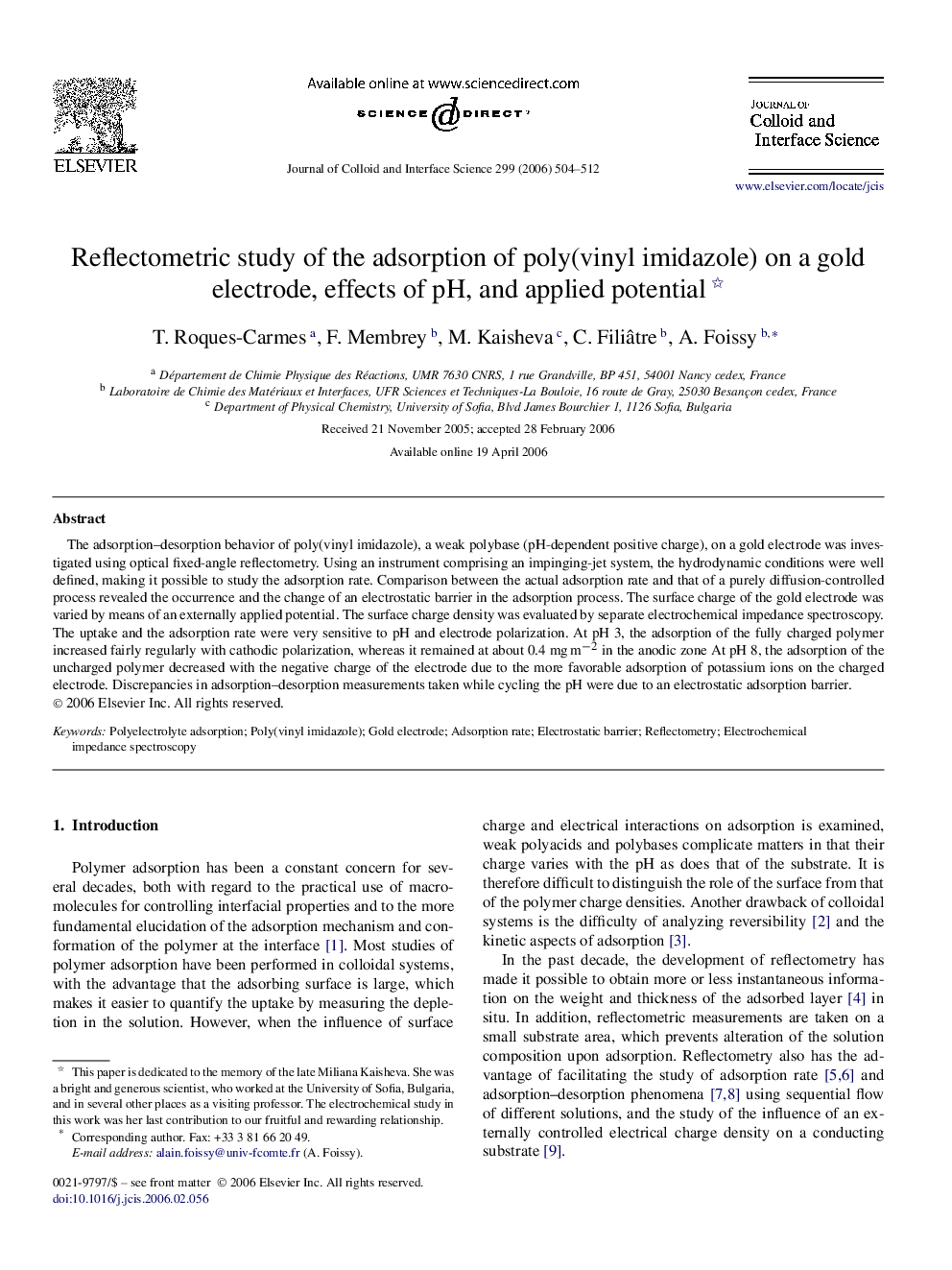| Article ID | Journal | Published Year | Pages | File Type |
|---|---|---|---|---|
| 613377 | Journal of Colloid and Interface Science | 2006 | 9 Pages |
The adsorption–desorption behavior of poly(vinyl imidazole), a weak polybase (pH-dependent positive charge), on a gold electrode was investigated using optical fixed-angle reflectometry. Using an instrument comprising an impinging-jet system, the hydrodynamic conditions were well defined, making it possible to study the adsorption rate. Comparison between the actual adsorption rate and that of a purely diffusion-controlled process revealed the occurrence and the change of an electrostatic barrier in the adsorption process. The surface charge of the gold electrode was varied by means of an externally applied potential. The surface charge density was evaluated by separate electrochemical impedance spectroscopy. The uptake and the adsorption rate were very sensitive to pH and electrode polarization. At pH 3, the adsorption of the fully charged polymer increased fairly regularly with cathodic polarization, whereas it remained at about 0.4 mg m−2 in the anodic zone At pH 8, the adsorption of the uncharged polymer decreased with the negative charge of the electrode due to the more favorable adsorption of potassium ions on the charged electrode. Discrepancies in adsorption–desorption measurements taken while cycling the pH were due to an electrostatic adsorption barrier.
Graphical abstractReflectometric output, consecutive to the adsorption of poly(vinyl imidazole) on gold as a function of electrode potential. Solution PVI 0.1 g L−1, KNO310−2M, pH 8.Figure optionsDownload full-size imageDownload as PowerPoint slide
